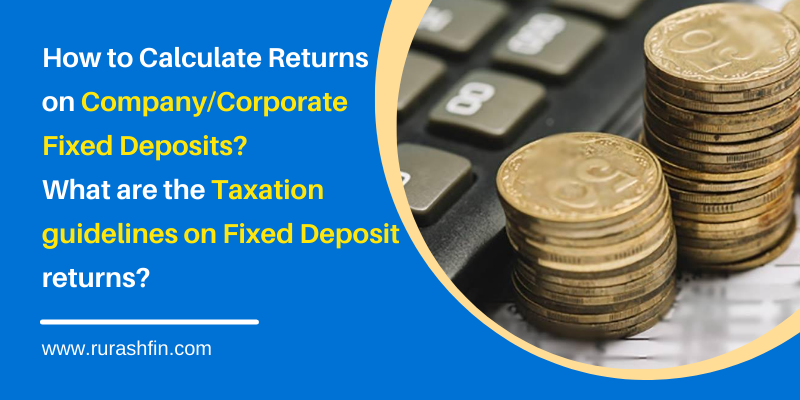Income Tax Act section 80C packs a huge potential for deductions from the taxable income allowing upto Rs 1.5 Lakh in deductions. Fixed Deposits help us leverage its entire potential.
Investors usually do not consider paying interest income tax on time. Here we cover what, when, and how of the income tax on FD interest income.
How is interest income taxed?
Interest income from fixed deposits is fully taxed. You add it to your total income and get taxed according to the slab rates your income falls under. It is reported as ‘Income from Other Sources in your income tax return.
Banks get to deduct tax at source when they are crediting interest into your account if the interest rate amount is greater than Rs 40,000 for individuals who are not senior citizens. For Senior Citizens, the cap is at Rs50,000
Hence you should keep in mind that TDS is deducted when the interest is credited not when the FD matures. This means if you have an FD for five years – Bank will deduct TDS at the end of each year
What is Tax Deducted at Source or TDS?
Whenever you receive any payment, the entity paying you will have to deduct tax before it makes the payment. This is called Tax Deducted at Source or TDS, this gets paid to the Central Government.
This way, you get the amount net of tax. You then would have to add the gross amount to your income when you’re filing for taxes. A TDS credit is also provided against it from the tax liability, and in the case of nil tax liability, a TDS refund is also offered.
For e.g., if you earn an Interest of about Rs 100 on your FD. The bank will deduct 10% i.e Rs 10 as TDS, and deposit the same to the government. So when you are filing your ITR, you have to report the entire interest amount earned i.e Rs 100 and claim a TDS deduction by the Bank of Rs 10 as a tax credit or TDS refund from the outstanding liability if any.
Calculation of Tax on:
- Add the interest you receive to your total income in the ITR each year. The interest income is reported as ‘Income from other sources.
- The income tax department will do a tax adjustment for TDS ( which has been deducted) against your final tax liability.
If the bank does not deduct the TDS from your interest income, it will be added to your total income and you will pay tax on it according to your slab. It is generally not advised to wait till the maturity of your FD to report your interest income as the accumulated interest may push your tax slab even higher and you might end up paying higher tax.
You can find the details of your TDS deduction through your Form 26 AS and also a detailed summary from AIS.
Let’s understand this with an example:
Let’s say you have 2 FDs in a bank of Rs1,00,000 and for a period of 3 years at a Rate of Interest of 6%. Thus after 1st year, the interest incurred would be Rs 12,000. Bank would not deduct TDS on interest below Rs 40,000.
But if you have an FD at the same interest rate but for Rs 10,00,000 you would receive an interest of Rs 60,000. The bank would deduct a TDS of 10% on it which would be Rs 6,000.
When should you pay tax on interest income?
If you have a pending tax liability on adding your interest income to your total income. You would be required to pay the tax on the deadline of that Financial Year.
If the tax payable after adding your interest income gets more than Rs 10,000, you are liable to pay advance tax.
Tax Deducted at Source or TDS and Fixed Deposits or FDs
When does bank not deduct TDS
If the interest income is less than Rs 40,000 in a given financial year, the bank will not deduct any TDS, The limit stays as Rs50,000
Prior to the Budget of 2019, the limit of TDS on the income through Interest was Rs 10,000
When will the bank deduct 10% TDS
Your bank will estimate all of your total income from all of your FDs in a year, and if your total interest income exceeds Rs40,000, the bank will deduct 10% TDS (in case of senior citizens more than Rs50,000)
When does a bank deduct 20% TDS
If you’ve failed to provide your PAN Information to the Bank, you can have about 20% TDS deducted. So make sure that you do not forget to provide your PAN details.
How to have Zero TDS Deduction
The only possible way to make sure that you do not get TDS deducted by Bank is when your total income is not taxable and you timely submit form 15G and Form 15H
RURASH is one of India’s investment management firms, providing financial solutions to augment the client’s wealth and build a legacy.
For any guidance regarding financial instruments, Connect with the relationship manager now or write to: invest@rurashfin.com
Also Read: Senior citizens’ special Corporate fixed deposits (FD) with interest rates & frequency of payments

